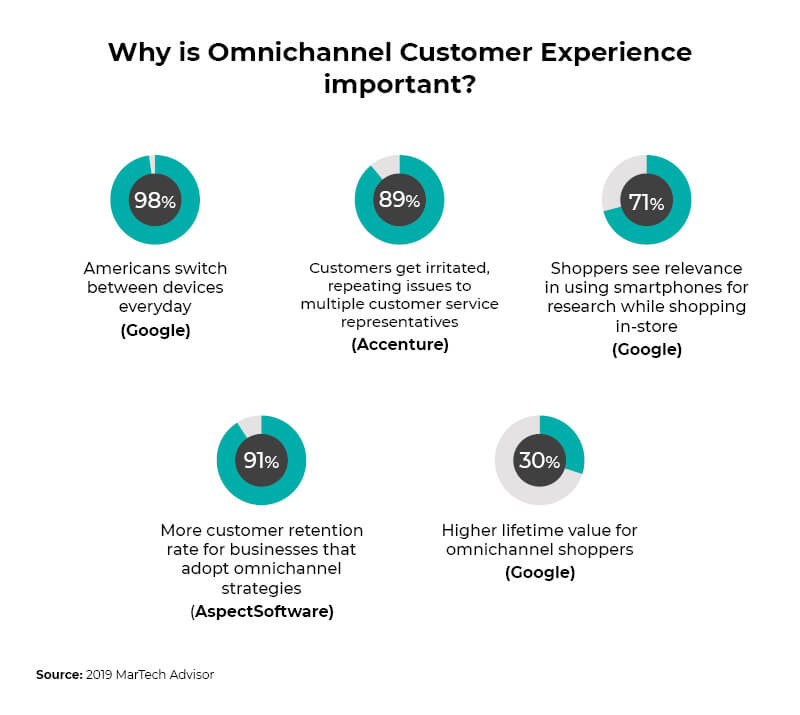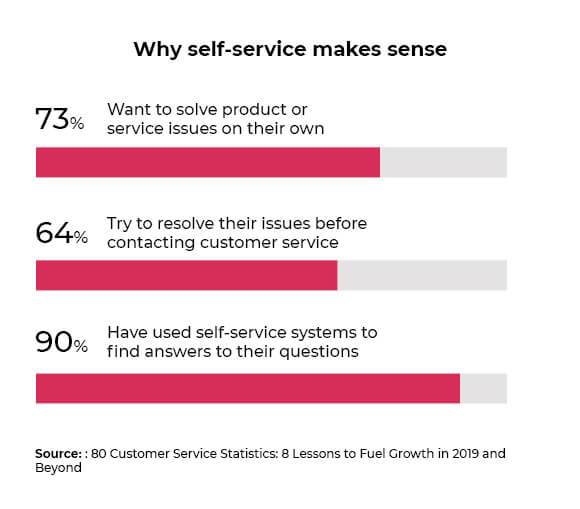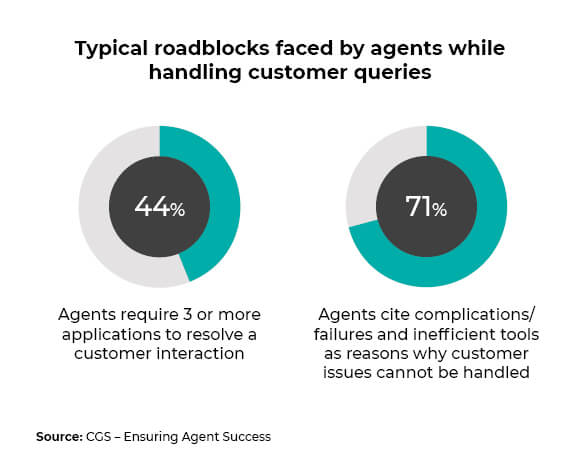Today’s customers are spoilt for choice. More than products and services, what they now find themselves paying for really is unparalleled customer service. Research shows that 8 out of 10 consumers are willing to pay a premium in return for a better customer experience. The pandemic has seen more shoppers switch brands without a second thought if their expectations go unmet. And negative experiences can keep your e-commerce customer service team fire-fighting on social media for days together; leave alone the bad-rep leading to lost sales.
As the e-commerce competitive landscape gets fiercer, organizations are looking towards effective e-commerce customer service strategies to set themselves apart. Here are some essential tips to meet this objective:
1. Ensure high-level insights from customer interactions reach the management suite
The executive management is often disconnected from day-to-day customer interactions. Very often, insights from social media responses, calls, emails, chat, etc., don’t get shared because they may not actionable to the leadership team.
While most external customer service providers stop at transactional processes, a true partner can help nip persistent service gaps in the bud. Vendors offering a 360-degree customer view can provide valuable insights that decision-makers can refer to, to improve process efficiencies in the long run.
It’s important to channelize these insights to them because an increase of 5% in retention rate can translate to 25% increase in profits. This means the sooner frictions are ironed out the lesser chances of loyal customers falling away.
2. Deliver a unified omnichannel experience
Today’s tech-savvy customers interact with organizations through different channels, such as social media, email, self-help tools, helpdesks, SMS, and so on. Among these, social media has grown into a popular channel. That’s why big brands like Nike, and marketplaces like Walmart-owned Flipkart have dedicated social media accounts exclusively for customer support.
A study by Microsoft shows that 66% of customers have used a minimum of three different channels to contact customer service. However, offering multiple channels for customers to reach you does not always translate into good customer service.
According to an Accenture report, 89% of customers get irritated repeating issues to multiple customer service representatives. Delivering impeccable experiences depends on providing a unified omnichannel customer service. The key is to allow messages and information to flow seamlessly across customer touchpoints. This way, shoppers can pick up where they left off on a query they made through an entirely different channel.

3. Integrated communications strategy to maintain consistency across channels
Simply put, your marketing, website/app, social media channels, and e-commerce customer service team should all be singing from the same song sheet. As marketers, we don’t really know what our customer’s next touchpoint will be. A poorly presented communication style that doesn’t quite resonate with your brand may make shoppers question the credibility of the message.
So whether it’s replying to a customer query via email, a dialogue with a chatbot on your website, addressing a grievance mentioned on social media, or a live chat/call conversation, maintaining a consistent tone of voice is critical to your brand’s perception. Digital firms that pay close attention to aligning all such communications with the brand’s image will help drive their brand value over time.
4. Automate whatever you can
Automation is enabling greater efficiencies across business functions, and e-commerce customer service is no exception. Research shows that in a six-minute customer service call, agents spend 75% of that time on doing manual research, leaving just 25% to interacting with customers. As a result, more organizations are treading towards greater automation through AI and virtual assistants. Studies predict that by 2025, AI will power 95% of all customer interactions, including live telephone and online conversations.
Employing automation can take the stress off your customer service team and allow them to better focus on building lasting relationships. Being a global consumer electronics player, Panasonic was challenged with responding to its non-English speaking customers. Not wanting to keep them waiting long, the brand partnered with Unbabel an AI vendor that helped deliver quick translations of emails enabling its customer service team to hold the fort on quality and timeliness.
Also, customers today are more self-service-oriented in the interest of time. Having an information-rich FAQ section on your website and chatbots equipped with answers to a myriad of common customer queries will mean more satisfied customers at optimized service costs.

5. Ensure superior agent experience (AX)
In many ways, your customer service agents represent your brand. Much like a Formula 1 driver needs the ideal gear and gusto to win the Grand Prix, so do your agents. Everything from tools to training, technology, and the work culture you imbibe is critical to their on-floor performance.
Lack of job satisfaction, unrealistic targets, and high-stress levels can result in agent burnout, increased churn rates, ultimately affecting customer satisfaction. That’s why it’s important to empower customer service agents.

To crank up their e-commerce customer service experience, savvy companies today are leveraging technology innovatively to keep agents happy and productive. This includes gamified training modules, AI-based systems, interactive dashboards, among others. Continuous development of support resources, offering self-service to customers to reduce agent burden, simplifying agent workspaces through user-friendly applications, regular employee engagement programs, are other efforts in this direction.
6. Personalization
When customers are convinced that you truly understand them, they find a reason to come back. 97% of marketers have seen a tangible lift in their business results from their personalization efforts in 2020. Delivering a customized experience requires an in-depth customer view at a glance – much like when you visit a local salon, and the main hairstylist greets you with “the usual?”
Segmenting your customers into different buyer personas based on their expectations and aspirations enables you to build this rapport. Data on aspects like their geolocation, device, job title, industry, purchase history, average order value, etc., captured via various touchpoints help better tailor your responses. Firms that don’t put such practices in place will soon lose to players that add this personal touch.
For instance, a customer in Paris awaiting his order of a comforter and opted for a curbside pickup, can be better empathized with, if the agent is updated with the current weather condition in Paris, while responding to him. Moreover, if it’s a high-value shopper, the agent can even offer to deliver the product at his doorstep for free, owing to bad weather conditions. While personalization is a great retention enabler, it’s also important to be prudent about how you use such data without making your customers feel apprehensive about their privacy.
It’s memorable customer service experiences like these that help distinguish your brand and take you from strength to strength. For over two decades, leading organizations have been partnering with Netscribes to enhance and scale their customer service offerings toward excellence. To know how we can help your business contact us.






